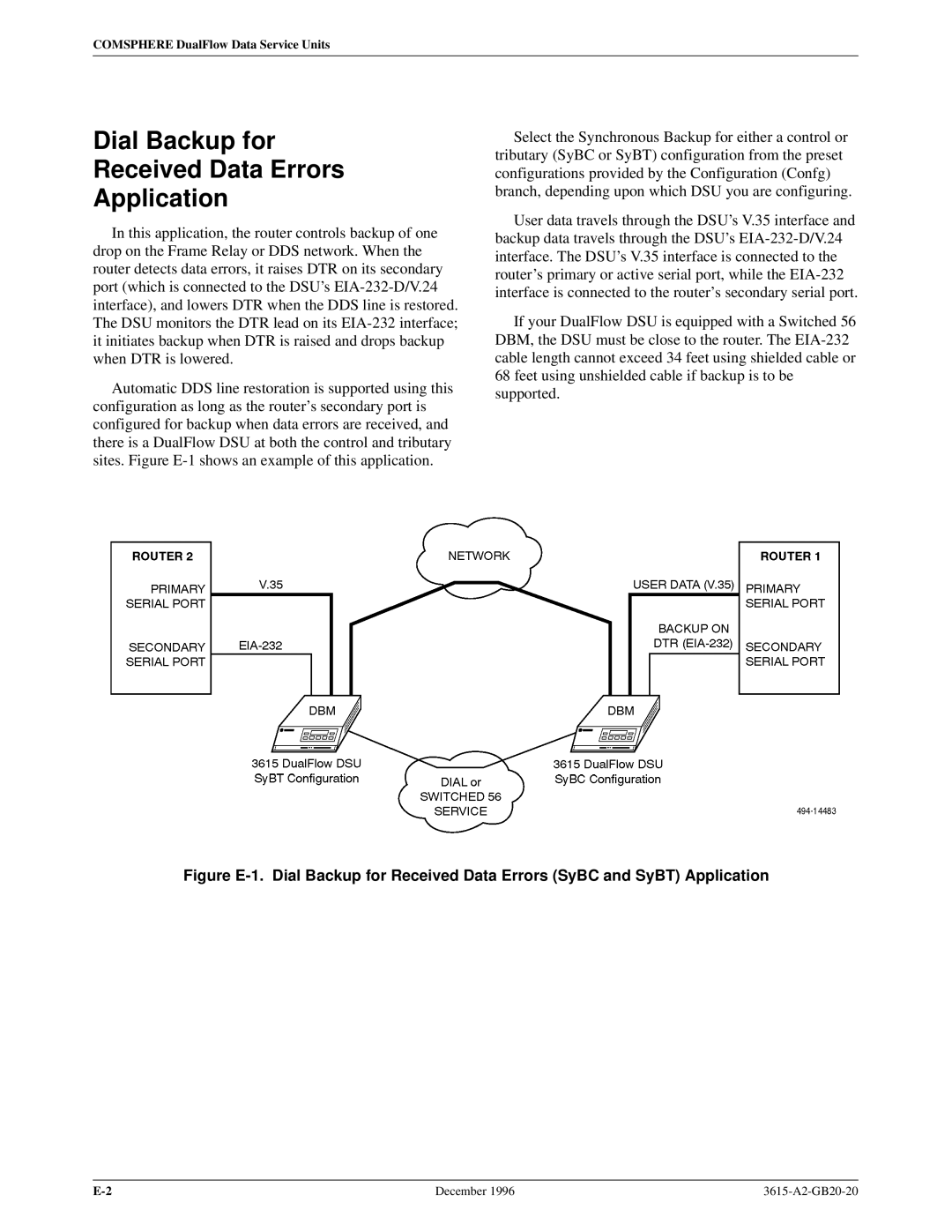
COMSPHERE DualFlow Data Service Units
Dial Backup for
Received Data Errors
Application
In this application, the router controls backup of one drop on the Frame Relay or DDS network. When the router detects data errors, it raises DTR on its secondary port (which is connected to the DSU's
Automatic DDS line restoration is supported using this configuration as long as the router's secondary port is configured for backup when data errors are received, and there is a DualFlow DSU at both the control and tributary sites. Figure
Select the Synchronous Backup for either a control or tributary (SyBC or SyBT) configuration from the preset configurations provided by the Configuration (Confg) branch, depending upon which DSU you are configuring.
User data travels through the DSU's V.35 interface and backup data travels through the DSU's
If your DualFlow DSU is equipped with a Switched 56 DBM, the DSU must be close to the router. The
Figure E-1. Dial Backup for Received Data Errors (SyBC and SyBT) Application
December 1996 |
